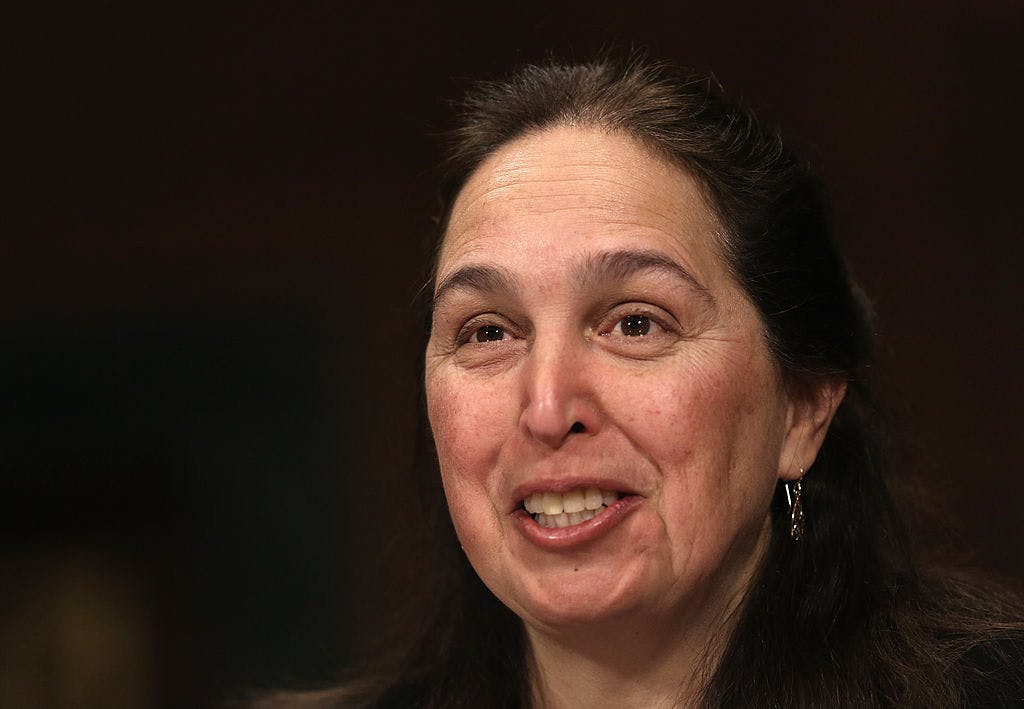Sick of your 'eco-friendly' car turning off at every red light? So is Trump's EPA head


Start/stop technology: where your car dies at every red light to help "save the environment." Companies are incentivized to include it, while most drivers hate it.
And now Trump is fixing it with the same bureaucracy that started it: the Environmental Protection Agency.
One test showed that over 900 miles in a month, the system saved just 0.02 gallons of gas.
If you’ve driven a new car in the last decade, you’ve likely encountered this maddening feature known as start/stop technology. You’re sitting at a red light, minding your own business, when your engine suddenly shuts off — only to sputter back to life as you ease off the brake.
It’s supposed to save fuel and “fight climate change,” but for most drivers, it’s a headache-inducing nuisance that makes you want to trade in your car faster than you can say “nanny state.”
'Everyone hates it'
Which is why we're all thankful for EPA head Lee Zeldin's May 12 announcement that the agency is scrapping mandates on this despised technology, giving drivers a rare win against bureaucratic overreach.
Zeldin didn’t pull punches, calling start/stop tech a “climate participation trophy” that “everyone hates.” He even shared an image of the dashboard button millions of drivers have come to know all too well — a circled “A” with the word “OFF” next to it, the first thing many of us press every time we get behind the wheel.
“EPA approved it, and everyone hates it, so we’re fixing it,” Zeldin declared. And judging by the sentiment on X, Instagram, Facebook, and others, he’s absolutely right about the “everyone hates it” part.
Exaggerated savings
Let’s rewind for a moment. Start/stop technology was forced on the automotive industry during the Obama administration’s crusade for stricter fuel economy standards. The concept sounds noble enough: If your car isn’t idling at a stoplight or in traffic, you’re not burning fuel or spewing emissions.
Automakers, under pressure to meet the 2012 CAFE standards of 54.5 miles per gallon by 2025, eagerly adopted the tech. Early studies painted a rosy picture — a 2011 report claimed up to 20% emissions reductions in diesel vehicles during urban driving, and AAA estimated in 2014 that the average driver could save about $179 a year in fuel costs thanks to a 7% boost in fuel economy.
But here’s the catch: Those numbers don’t hold up in the real world. Car sales experts have run the numbers and found the savings to be laughably small — one test showed that over 900 miles in a month, the system saved just 0.02 gallons of gas. That’s right, two-hundredths of a gallon. You’d save more fuel by skipping a quick trip to get a coffee than you would with this so-called “green” innovation.
Glaring downsides
Meanwhile, the downsides are glaringly obvious. The constant on-off cycling feels jarring, especially in stop-and-go traffic. Drivers across the internet (and especially in our comment sections) consistently report that it’s the first feature they disable every time they start their cars.
But here’s the rub: Manufacturers, egged on by EPA incentives, made sure the system turns back on by default every time you start your engine. You can’t permanently disable it without jumping through hoops or paying for aftermarket fixes — a perfect example of government meddling making life harder for no good reason.
Real safety concerns
Beyond the sheer annoyance, start/stop tech poses real safety concerns. Drivers have reported dangerous scenarios where the system creates a delay at the worst possible moment — like when you’re in the middle of a busy intersection, trying to make a left turn, and your engine decides it’s time for a quick nap.
Even a half-second lag as the engine restarts can spell trouble, especially in high-pressure situations. For a feature that’s supposed to save a few drops of gas, that’s a risk most of us aren’t willing to take.
Wear and tear
Then there’s the toll it takes on your vehicle. Starting an engine causes more wear on components like the starter motor and battery than keeping it running. With start/stop tech, a typical commute can involve up to 100 times more engine starts compared to a car without the system.
Automakers have tried to address this with more durable parts and advanced lubricants, as noted in a 2022 Autocar report, but the long-term impact on engine life remains a big question mark.
Diesel vehicle owners face even more headaches — issues with diesel exhaust fluid systems can trigger “limp mode” or even leave you stranded with a warning that your engine will shut down completely after a few hundred kilometers. For a technology that’s supposed to make driving more efficient, it’s causing an awful lot of chaos.
Rare common sense
Ditching the mandates is a rare moment of common sense in an era when government overreach often takes precedence over practicality.
Drivers in online communities celebrated the news, with many calling it the most annoying “feature” in modern cars. Some suggested manufacturers should offer a simple dealership fix to disable the system permanently — no expensive aftermarket chips required. Others proposed flipping the script entirely: Make the system off by default, and let drivers turn it on if they want to play eco hero.
This rollback is part of a larger effort by the EPA to cut burdensome regulations. In March 2025, the agency announced plans to target dozens of rules, including some tied to vehicle emissions.
Environmentalists, as expected, are crying foul, claiming that scrapping start/stop tech will lead to more pollution and health risks. But let’s get real — fuel savings of 3%-10% (that's .5 to 2mpg difference) are a drop in the bucket compared to the aggravation and potential safety hazards this tech creates. If the government wants to tackle climate change, it should focus on solutions that don’t make everyday life harder for hardworking Americans.
This rollback is also a victory for drivers who just want to get from point A to point B without their car playing eco warrior at every stoplight.
Green is not great
It’s also a reminder that not every “green” idea is a good one. Drivers have long argued that they should have control over their own vehicles — after all, if you’re shelling out on average $50,000 for a new car, you shouldn’t have to fight a government-mandated feature to drive it the way you want.
A simple software update could allow owners to permanently disable the system, but until now, manufacturers have been more interested in pleasing regulators than their customers.
Don’t expect the climate activists to back down quietly, though. They’ll likely push for new regulations to replace the ones being scrapped, and automakers will have to find other ways to meet emissions targets — hopefully without resorting to another half-baked gimmick. For now, drivers can look forward to a future where they won’t have to hit that “OFF” button every time they start their cars. It’s a small win, but in a world where common sense often takes a back seat to bureaucracy, it’s one worth celebrating.
What’s your take — have you been fed up with start/stop tech, or are you one of the few who actually liked it? Let us know in the comments below, and let’s keep the conversation going.
Originally Published at Daily Wire, Daily Signal, or The Blaze
What's Your Reaction?
 Like
0
Like
0
 Dislike
0
Dislike
0
 Love
0
Love
0
 Funny
0
Funny
0
 Angry
0
Angry
0
 Sad
0
Sad
0
 Wow
0
Wow
0











































































